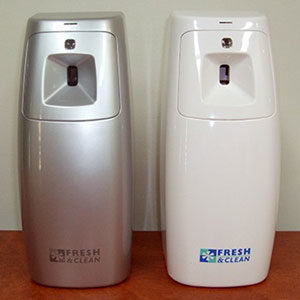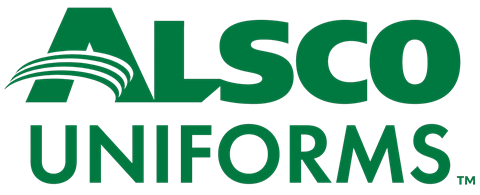Urinals were once famously dubbed vespasiennes by Parisians. The first vespasienne appeared in Paris in 1834.
The name is derived from that of the Roman emperor Vespasien, who, according to legend, imposed a tax on urine for use in tanning.
They doubled as both urinals and advertisements stands!
As one of the earliest models of urinals, they were not without error.
We can only imagine how terrible the stench must have been for reforms to fall into place.
Now, you must understand that this was a generation in an age accustomed to chamber pots in bedrooms.
It is worth wondering what happened to the poor trees in Palais-Royal gardens from all the urine they took in.
So, what do they have in common with conventional urinals?
Well, let’s find out…
6 Main Issues and Their Solutions
Urinals are designed to last for decades.
Most problems are then derived from the plumbing, odour and external fixtures.
San Francisco grabbed the headlines in 2011 for… can you guess?
Smelling unpleasant.
The smell was traced back to low-flow toilets, which guides us to our first problem…
1. Low Flush Pressure
Because conventional urinals use water, they have flush valves installed at the top of the urinals. They are either controlled manually or by sensors.
Sometimes a lot of water goes to waste because of the timer system involved.
Consider upgrading your plumbing with PVC pipes, which are better for handling the minimal flow of newer toilets.
It is also important to note the current state of your pipes. Older cast-iron pipes could be troublesome when handling the low-flow. A pressure-assisted toilet is designed to enhance the flush with pressurised air in the toilet tank.
Caution: Pressure-assisted toilets are more expensive and noisier, which may be an issue for a bathroom adjacent to a bedroom, but they typically require less maintenance.
Take note that it would be wise to avoid also using chemical in-tank cleaners. Their corrosive nature is bound to deteriorate toilet apparatus.
They also lower the effectiveness of the water, interfering with flushing speed and strength.
This is an easy repair that can be performed by building engineers. However, there should be a regulator that can be adjusted to release more water.
2. High Flush Pressure
Then what should you do in the opposing scenario?
High flush pressure is dangerous because of all the germs that get to traverse your washroom and re-create their own adventures of Phineas and Ferb.
Simply put, germs thrive in stagnant water that sits in your toilet.
That environment is highly conducive for bacteria, and when the toilet is flushed, water can spray onto nearby surfaces, including the flush valves, walls, etc.
Follow the same aforementioned steps, but this time, turn the regulator so that less water is released.
In both cases, over time and with use, regulators may need to be adjusted. In some cases, the entire flush device may need to be replaced.
When replacing parts, try to find the original manufacturer’s equipment rather than secondhand parts.
The extra cost and effort are beneficial in the long-run, as some after-market parts do not work properly.
3. Odour Control
Smells and blockages are caused by the buildup of uric salt, body fat and limescale in waste traps.
As your urinal fixtures age, odours can develop in your washroom that could lead to overflows and flooding, which in turn can cost you time and money for repairs.
The causes of odours are usually easy to rectify but can take some time to identify.
The first step should be to find the source of the odour and make sure it really is related to the urinals in the washroom.
Sometimes it is easy to assume the origin of certain odours.
Large buildings that have a lot of open spaces could have smells emanating from one washroom and have it noticeable on other floors.
More often than not, urinals are not smelly, and this is because the cleaners are using appropriate cleaning chemicals and doing their job properly.

Key signs of inadequate cleaning include brown stains underneath the urinal bowl, especially around the traps, and stains at the back of and underneath the urinals.
Alsco New Zealand offers odour control services that can easily help you maintain your washroom standards.
While the Alsco Auto Sanitisers are great to combat odour-causing bacteria, your Air Fresheners are the cherry on top by improving the air quality of your washrooms.
The two work best in combination to provide the ultimate hygiene experience!
Alsco also has a managed rental service. We install, maintain and replace dispensers on a schedule that is flexible with your preferences.
4. Flushing Difficulties
Since gravity can only do so much with the little water present in pressure-assisted flush toilets, they use pressurised air in the tank to push the water into the bowl more forcefully.
This makes up for the low water levels.
Australia is home to dual-flush toilets, which have options: you either push one button for flushing liquid waste or another for solid waste.
Caroma first introduced the dual-flush system to help reduce water waste and they made it efficient too!
How pervasive does it feel when a urinal does not flush?
When this happens, there could be an actual break in the piping leading to the urinal.
Sometimes, it is caused by a malfunction of some sort in the flushing mechanism, whether manual or automatic.
Most problems can be avoided by only using the toilet for its intended use.
Paper towels and other kinds of trash aren’t to be dumped in high-efficiency toilets: they are not designed for it.
This should be made common knowledge in high-traffic buildings (schools, stadiums, malls and many others) to save on maintenance costs.
5. Backed-Up Drain
When the water does not drain in a urinal, the problem can vary. It could be a simple issue relating to a clog in the urinal internal drain.
Or a complicated problem meaning the plumbing drain line may need to be snaked.
If you have unsuccessfully tried to clear your clogged drain with a plunger before, then a drain snake is your next best option.
This is the act of getting a clog to move out of your pipe so that your utilities will drain without problems.
It would be wise to also check the vet stack regularly for cleanliness.
They are designed to release sewer gases. This is usually via the roof of a facility and to provide air supply so the fixtures work correctly.
A plunger can be used to clear any debris that may be lodged in the drain hole.
If clearing the urinal drain holes does not fix the problem, you will want to check the main drain line for blockages.
Calling a plumber to oversee these tasks is best.
6. Strange Noises
As pipes age, the metal begins to fall apart in little flakes from the inside. Old buildings tend to have old pipes.
If you have ever flushed a toilet and heard strange noises, it probably came from sediment or obstructions in the waterline. You can relax.
These metal flakes can easily find their way into the nylon hoses used for sinks, urinals and toilets through the water pressure when it is flushed.
If these lines get blocked, the water flow to the toilet will be at a slow crawl, followed by backwater pressure noises until the lines are unclogged. This could sound like the beginning of a horror movie.
This urinal repair requires you to turn off the main water line and clear any iron peelings and residue from the pipes that bring in water.
What’s Next?
If your washrooms are high-traffic areas, you are bound to encounter some of the challenges mentioned above.
Focus on creating an environment that allows you, your staff and potential guests to have a pleasant experience.
When you invest in conventional urinals, invest in the training and education that equips your staff to care for them correctly.
Remember to also schedule deep cleaning from experts who will thoroughly clean every corner of the washroom.
The right supplier will make this a no-brainer. Choose an affordable but reliable partner like Alsco NZ.
Photo: Daniel Hamilton






